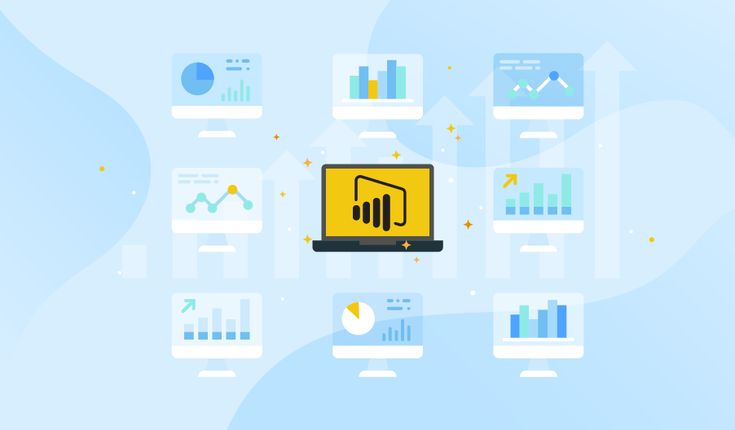The battle between Power BI and Tableau has been raging in the business intelligence space for years, and for good reason. Both tools are incredibly powerful, but they take fundamentally different approaches to data visualization and analytics. If you’re trying to decide between them for your next project or organization, understanding their core differences is crucial.

Power BI vs Tableau: The Philosophy Behind Each Tool
Power BI was built with Microsoft’s ecosystem in mind. It’s designed to be the natural BI solution for organizations already invested in Microsoft technologies like Office 365, Azure, and SQL Server. Microsoft positioned it as a democratized analytics tool that business users could pick up quickly without extensive training.
Tableau, on the other hand, was purpose-built for data visualization from day one. It started as a Stanford research project focused on making data analysis more intuitive through visual exploration. Tableau’s philosophy centers around giving analysts and data scientists maximum flexibility to create sophisticated visualizations.
Learning Curve and Ease of Use
If you’re coming from an Excel background, Power BI will feel immediately familiar. The interface borrows heavily from other Microsoft products, and basic visualizations can be created with minimal training. You can literally drag fields onto a canvas and get meaningful charts within minutes.
Tableau has a steeper learning curve, but this comes with significant payoffs. Once you understand Tableau’s logic and methodology, you can create incredibly sophisticated visualizations that would be difficult or impossible in other tools. The learning investment is higher upfront, but the analytical capabilities you unlock are substantial.
Data Connectivity and Integration
Both tools excel at connecting to various data sources, but they have different strengths.
| Data Source Type | Power BI | Tableau |
| Microsoft Ecosystem | Native integration, seamless | Good connectivity, some limitations |
| Cloud Platforms | Strong Azure integration | Excellent multi-cloud support |
| On-premises Databases | Good coverage | Extensive native connectors |
| Web APIs | Built-in connectors for popular services | Flexible web data connector |
| Big Data | Azure-focused solutions | Strong Hadoop/Spark integration |
| Real-time Streaming | Power BI streaming datasets | Limited real-time capabilities |
Power BI shines when your data lives in the Microsoft ecosystem. If you’re using Azure SQL Database, SharePoint, or Office 365, the integration is almost effortless. The data modeling capabilities in Power BI are also quite robust, especially with the Power Query engine handling data transformation.
Tableau’s strength lies in its flexibility with diverse data sources. It can connect to practically anything, and the data connection experience is generally more robust for complex scenarios. However, Tableau’s data preparation capabilities, while improved with Tableau Prep, still lag behind Power BI’s integrated approach.
Visualization Capabilities
This is where the tools really diverge in their approaches.
Power BI provides a solid set of standard visualizations that cover most business needs. The visual gallery includes everything from basic charts to more advanced visuals like decomposition trees and key influencers. Custom visuals from the marketplace extend functionality significantly, though quality can be inconsistent.
Tableau’s visualization engine is simply more powerful. The level of customization possible in Tableau is extraordinary → you can create pixel-perfect dashboards with complex interactions that would be challenging to replicate in other tools. Features like dual-axis charts, advanced calculated fields, and sophisticated mapping capabilities give Tableau a clear edge for complex analytical scenarios.
Performance and Scalability
Performance characteristics differ significantly between the platforms.
Power BI leverages Microsoft’s cloud infrastructure and benefits from tight integration with Azure services. For organizations already using Azure, performance can be excellent. The VertiPaq engine that powers Power BI’s in-memory analytics is quite fast for typical business scenarios. However, Power BI can struggle with very large datasets that don’t fit well into its columnar storage model.
Tableau’s performance depends heavily on your underlying data architecture. With proper data source optimization, Tableau can handle massive datasets efficiently. Tableau’s ability to push calculations down to the database level often results in better performance for complex analytical queries. However, this requires more technical expertise to optimize properly.
Collaboration and Sharing
Both platforms have evolved their collaboration features significantly, but they take different approaches.
Power BI’s collaboration model revolves around workspaces and apps, with seamless integration into Microsoft Teams and SharePoint. If your organization lives in the Microsoft ecosystem, sharing reports and collaborating on dashboards feels natural. The commenting and subscription features work well for most business scenarios.
Tableau Server and Tableau Online provide robust collaboration platforms with more granular permission controls. Tableau’s web editing capabilities are more advanced, allowing for significant dashboard modifications without the desktop application. The data governance features in Tableau are also more mature, which matters for larger organizations.
Cost Considerations
Pricing models between the two platforms are structured quite differently.
Power BI’s pricing is straightforward and generally more affordable, especially for organizations already paying for Microsoft 365. The per-user licensing model makes budgeting predictable, and the Premium capacity options provide good value for larger deployments.
Tableau’s pricing is higher but reflects its positioning as an enterprise analytics platform. The cost can be justified when you need Tableau’s advanced analytical capabilities, but it’s definitely a more significant investment. Factor in training costs as well, since Tableau typically requires more specialized skills.
Development and Customization
From a developer’s perspective, the extensibility options differ significantly.
Power BI offers custom visuals development through TypeScript and D3.js, but the framework has limitations. Power Apps integration provides some customization options, and the REST APIs enable decent programmatic access. However, you’re ultimately working within Microsoft’s ecosystem constraints.
Tableau provides more flexible customization options through its JavaScript API and embedding capabilities. The ability to create custom connectors and leverage Tableau’s calculation engine programmatically gives developers more freedom. However, this flexibility comes with complexity.
When to Choose Power BI

Power BI makes sense when you’re already invested in the Microsoft ecosystem and need solid business intelligence capabilities without extensive training requirements. It’s particularly strong for:
Organizations using Microsoft 365 and Azure services. The integration benefits are substantial, and licensing costs are often more palatable when bundled with existing Microsoft subscriptions.
Self-service analytics scenarios. Business users can become productive quickly without extensive technical training. The Excel-like interface reduces adoption barriers significantly.
Standard reporting and dashboard needs. For typical business reporting requirements, Power BI provides excellent capabilities at a reasonable cost.
Mixed skillset teams. When you have business users who need to create simple reports alongside analysts building more complex solutions, Power BI’s range of complexity options works well.
When to Choose Tableau
Tableau is the better choice when analytical sophistication and visualization flexibility are priorities. Consider Tableau for:
Complex analytical requirements. When you need advanced statistical functions, sophisticated visualizations, or complex data exploration capabilities, Tableau’s analytical engine is superior.
Data visualization as a core competency. Organizations where data storytelling and visual analytics are critical business functions will benefit from Tableau’s advanced capabilities.
Diverse data ecosystem environments. If you’re working with multiple cloud providers, various database technologies, or complex hybrid architectures, Tableau’s connectivity flexibility is valuable.
Teams with dedicated analysts. When you have skilled analysts who can leverage Tableau’s full capabilities, the investment in training and licensing pays off through more sophisticated insights.
Making the Decision
The choice between Power BI and Tableau isn’t just about features → it’s about organizational fit, existing technology investments, and analytical maturity. Power BI offers an excellent balance of capability and ease of use, especially for Microsoft-centric organizations. Tableau provides unmatched analytical depth and visualization flexibility for organizations willing to invest in the necessary skills and infrastructure.
Consider starting with a pilot project using both tools if possible. The real-world experience of working with your actual data and user requirements will provide insights that feature comparisons alone cannot deliver. Both platforms are excellent in their own right, but the right choice depends entirely on your specific context and requirements.




